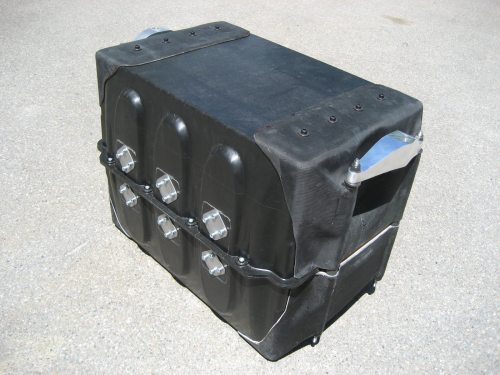
An electric car needs to weigh as little as possible – the lighter the vehicle, the longer it can stay on the road without recharging.
With this in mind, engineers at the Fraunhofer Institute for Chemical Technology ICT in Pfinztal, Germany, are developing manufacturing concepts to gradually replace individual components in the vehicle with lightweight ones, without affecting the stability of the car or the safety of the passenger.
The researchers have been working with the Artega GT, a sports car that was modified into a prototype with an electric drive, where the electric motor is located in the rear. Along with colleagues from other Fraunhofer Institutes, they have developed a crash-safe battery housing that weighs 35 kg (77.16 lb). The battery itself weighs 340 kg (749.57 lb).
The new lightweight housing, which surrounds the battery, is made of fibre composite materials.
“Traditional solutions made of steel weigh up to 25% more,“ says Manfred Reif, project manager in the joint project Fraunhofer System Research for Electromobility. “The battery housing can withstand a crash, assuming a ten-fold gravitational acceleration.“
Even if a sharp object collides with the housing at 60 km/h (45 mph), the battery on the inside remains intact. In addition, the 16 lithium-ion modules are protected from humidity, and a semi-permeable membrane to equalise pressure also guarantees that the batteries are able to 'breathe.'
The Fraunhofer scientists have also developed a process chain with cycle times that makes the production of a high number of parts possible.
“The process chain is designed so that many steps can be run simultaneously,“ explains Reif. "For example, the plastic is heated up parallel to the production step, and elements are prepared that ensure load and tensile strength or the attachment to the storage in the rear of the Artega. This includes, for example, directionally oriented fibreglass structures or custom-made metal inserts. All the individual components are then assembled and pressed together in a one-shot process.“
The housing will be presented at COMPOSITES EUROPE 2011 in Stuttgart on 27-29 September (Hall 4, Booth D03).
Currently, the battery box must still be secured with transverse attachments in the rear of the Artega; however, the scientists are already looking at a lightweight replacement for that.






